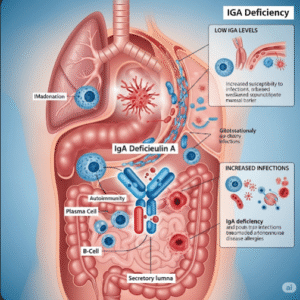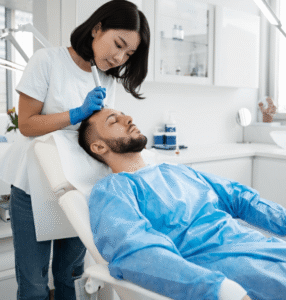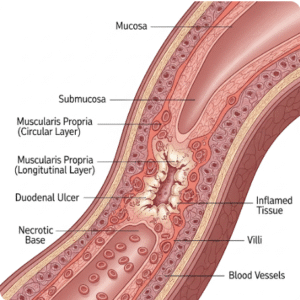Overview
Onchocerciasis, commonly known as River Blindness, is a parasitic disease caused by the worm Onchocerca volvulus. It is transmitted to humans through repeated bites by infected blackflies (Simulium species), which breed in fast-flowing rivers and streams—hence the name “river blindness.” The disease is a major cause of preventable blindness in tropical regions, particularly in sub-Saharan Africa. Onchocerciasis primarily affects the skin and eyes and is considered one of the world’s leading neglected tropical diseases (NTDs).
What is Onchocerciasis (River Blindness)?
Onchocerciasis is a chronic parasitic infection where adult worms live in the subcutaneous tissues of the human body and release microscopic larvae known as microfilariae. These larvae migrate through the skin and eyes, causing intense itching, skin changes, and damage to the eye that can lead to irreversible blindness. The disease is not spread person-to-person but through the bite of an infected blackfly that carries the parasite from one human to another.
It affects millions of people in endemic regions and has severe social and economic consequences due to disability, stigma, and reduced productivity.
Symptoms
Symptoms may take months or even years to appear after infection and vary depending on the severity and duration of the disease. Common signs and symptoms include:
- Severe itching and skin rashes
- Skin thickening, discoloration, and depigmentation (“leopard skin”)
- Formation of nodules under the skin where adult worms reside
- Eye inflammation, pain, redness, or sensitivity to light
- Progressive vision loss or permanent blindness
- Hanging groin (loss of skin elasticity in the groin area due to chronic inflammation)
Causes
Onchocerciasis is caused by the filarial parasite Onchocerca volvulus, which is transmitted through the bites of infected blackflies. The life cycle includes:
- An infected blackfly bites a person and injects larvae (microfilariae)
- The larvae mature into adult worms within the body (can live up to 15 years)
- Adult worms form nodules and produce thousands of microfilariae
- These microfilariae migrate through the body, causing tissue damage
- New blackflies become infected when they bite an infected person and continue the transmission cycle
Risk Factors
Certain populations are at higher risk of developing onchocerciasis:
- Living in or near riverine rural areas of endemic countries
- Frequent exposure to blackfly bites, such as fishermen and farmers
- Lack of access to healthcare and public health programs
- Age and gender: Symptoms worsen with age and are often more severe in men
- Migration to endemic areas without prior immunity or treatment
Complications
If left untreated, onchocerciasis can cause a range of serious complications:
- Chronic dermatitis and permanent skin damage
- Disfigurement and scarring that can affect mental health and social standing
- Irreversible blindness, typically after years of infection
- Secondary bacterial infections from intense scratching
- Reduced quality of life and ability to work
- Community-wide economic impact, especially in heavily endemic regions
Prevention
Prevention of onchocerciasis focuses on breaking the transmission cycle and reducing exposure:
- Mass drug administration (MDA) programs using ivermectin
- Wearing protective clothing and insect repellents
- Avoiding areas with high blackfly populations, especially near rivers during peak times
- Vector control: Spraying insecticides to kill blackfly larvae in breeding sites
- Community education about the importance of regular treatment
Treatment Options in Korea
While onchocerciasis is not endemic in South Korea, the country offers excellent infectious disease expertise and care for imported cases, typically in travelers, expatriates, or immigrants from endemic areas. Treatment involves:
- Ivermectin, a medication that kills microfilariae (but not adult worms), typically given every 6 to 12 months to reduce symptoms and prevent transmission
- Doxycycline, an antibiotic that targets a symbiotic bacteria (Wolbachia) essential to the survival of adult worms
- Surgical removal of nodules (nodulectomy) in some cases
- Ophthalmologic care for eye-related complications
- Follow-up monitoring to prevent recurrence and assess for complications
Travelers returning from endemic areas with persistent itching or visual symptoms can seek diagnosis and care at infectious disease clinics in leading Korean hospitals, such as Seoul National University Hospital, Severance Hospital, and the National Medical Center.













